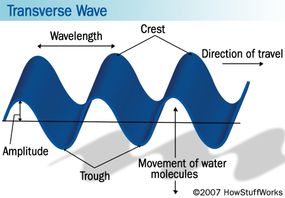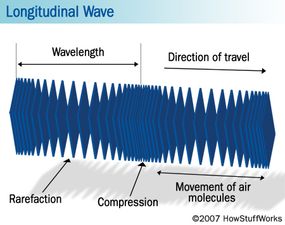One man's noise is another man's music, but no matter what your taste, ambient noise is the enemy. Luckily, there's a piece of audio equipment designed especially to maximize your listening experience, keeping ambient noise out without sacrificing your music's sound quality. That piece of equipment is the headphone, and in this article, we're going to look at how headphones, especially noise-canceling headphones, work.
On a 1978 flight to Europe, Amar Bose, the founder of Bose Corporation, put on a pair of airline-supplied headphones, only to find that the roar of the jet engines prevented him from enjoying the audio.He started making calculations right there on the plane to see if it was possible to use the headphones themselves as a noise-reducing agent. Bose introduced the first noise-canceling headphones a decade later.
Advertisement
In order to understand headphones, you must first understand sound waves. You can check out How Speakers Work for some information, but we're also going to provide a brief introduction here.
When most people think of waves, they think of water waves, like you'd seen in an ocean or lake. A shallow water wave is an example of a transverse wave, which causes a disturbance in a medium perpendicular to the direction of the advancing wave. You can see this relationship in the illustration below. The illustration also shows how waves form crests and troughs. The distance between any two crests (or any two troughs) is the wavelength, while the height of a crest (or the depth of a trough) is the amplitude. Frequency refers to the number of crests or troughs that pass a fixed point per second.

Sound waves have many of the same characteristics as water waves, but they are longitudinal waves, created by a mechanical vibration in a medium that produces a series of compressions and rarefactions in a medium. When you pluck a guitar string, for instance, it begins to vibrate. The vibrating string first pushes against air molecules (the medium), then pulls away. This results in an area where all of the air molecules are pressed together and, right beside it, an area where air molecules are spread far apart. As these compressions and rarefactions move from one point to another, they form a longitudinal wave, with the disturbance in the medium moving parallel to the direction of the wave itself.
Longitudinal waves have the same basic characteristics as transverse waves. A compression corresponds to a crest, and a rarefaction corresponds to a trough. The distance between two compressions, then, is the wavelength, while the amount the medium compressed is the amplitude. Frequency refers to the number of compressions that pass a fixed point per second.

For sound waves, amplitude determines the intensity, or loudness, of the sound. Frequency determines the pitch, with higher frequencies producing higher pitch notes and lower frequencies producing lower pitch notes. The brain is able to interpret these characteristics of sound, but before that can happen, the sound waves must be detected by a sense organ. That, of course, is the ear's job. To learn more about how the ear detects and interprets sound, check out How Hearing Works.
Next, we'll look at how headphones take advantage of some of these same principles to help people hear music, books on tape or other recorded material.

